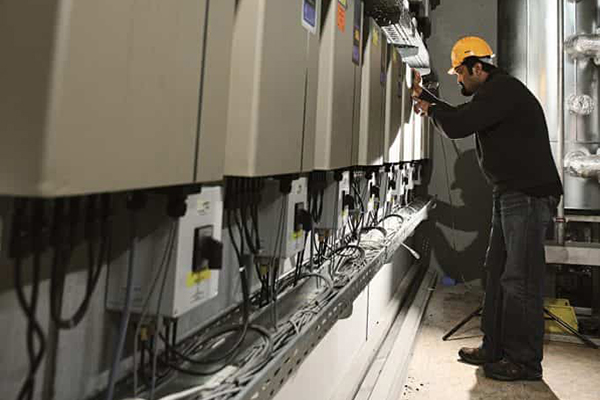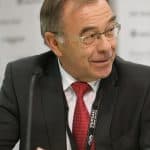Installers Worldwide
by Vivian Bullinger | 16.07.2018

Three different countries, three different frameworks, one profession: PV energy installer. At first glance, the differences outweigh the differences, but the goals are the same.
PV energy is not a local phenomenon, but a worldwide industry. Similar technologies are used and advertised everywhere. Yet, how do the installers who install this technology and service the PV systems work? How do these practical experts assess the generation of energy from the sun? What differences are there in the individual countries? The international PV monitoring manufacturer, Solare Datensysteme GmbH, asked three of its installer customers from three different continents about these questions.
May we introduce:
Samay Mangalagiri is the Managing Director of SM Renergy (P) Ltd in India. His background stands out from that of the other interviewees. Mr. Mangalagiri originally ran a shrimp farming business. At
commissioned by the Food and Agriculture Organization of the United Nations, he prepared an analysis on the benefits of using PV and biomass energy for shrimp farming in developing countries. After this project, his enthusiasm for PV energy remained and he established his own company - SM Renergy (P) Ltd - a Renewable Energy Service Company in January 2017. In a little over a year, SM Renergy has already commissioned over 1.1 MWp of rooftop PV projects and currently manages around 7 MWp of rooftop installations across India.

As managing director of the German-based WALTER solar GmbH group of companies, Wolfgang Walter can look back on a long company history. As early as 1987, he founded his engineering office, which has been designing PV systems since 2005. With the advent of PV energy, the company's focus shifted to the conceptual design of PV systems and the energy-efficient construction and conversion of buildings. Today, the company group covers all areas of renewable energy in and around buildings - i.e. WALTER solar takes over all work steps from conception and planning to installation and system support.

Michael Putnam, together with David Ronen, is the owner of IL-Solar, Inc. founded in 2015. The full-service distributor and installer, based in Illinois (USA), is active in the field of renewable energy as well as energy storage. "We wanted to be part of this growing market - renewable energy - and drive its development in the US. Our main focus has always been to be at the forefront," says Mr. Putnam, describing his motivation to enter the PV market. The success of this strategy can be seen, among other things, in the fact that the company now employs 20 people.

PV Energy on Site
Everyone agrees that PV energy is an intelligent and future-oriented solution for energy generation. However, what is the current state of energy generation in individual countries?
India has seen the largest growth in installed PV capacity in recent years and is expected to do so in the coming years. Currently, the country of about 1.324 billion people gets most of their electricity from fossil fuels and hydropower. By 2022, 100 GW to 175 GW of installed PV capacity is expected to be added, and by 2025, the goal is to cover 40% of total energy demand with renewables.
Back to Germany. Here the situation is very ambivalent. For a long time, the country was considered a pioneer when it came to alternative energy production. Today, Germany offers a colorful mix of renewable and fossil energy sources. Coal, gas, and nuclear energy are contrasted with renewable forms of energy from wind, water, and the sun. Measured in terms of total energy consumption, Germany will probably not be able to achieve the climate targets it has set itself. Nevertheless, the share of electricity from renewable energies is already over 38% today - and rising.
The USA is still heavily dominated by the coal industry - but a change is discernible. Around 30% of electricity generation comes from coal, followed by natural gas and nuclear energy. In 2016, 15% of electricity was already generated from renewable energy sources. Michael Putnam sees further development as positive: "initially, demand for PV systems was restrained, but this has increased enormously in recent years."
Large Projects, Fast Implementation, Complex Planning
The projects are as varied as the general conditions. We asked installers about their personal favorite project of the past year.
When asked about his "favorite project," Mr. Mangalagiri tells us about the 250 kWp rooftop installation on a school in Noida, Delhi. Not entirely without pride, he mentions that it is the largest PV system in Delhi.
The reference plants of the German company WALTER solar are far more comprehensive. The company offers holistic concepts, if requested by the customer. Thus also the favorite project is more complex arranged. Wolfgang Walter tells with shining eyes: "In 2016 and 2017, WALTER solar realized the new building of the company allnatura Vertriebs GmbH in Heubach. Here, an overall energy concept was created with a solar façade, electricity storage, heat pump, and geothermal probe system. The system has an output of 129.10 kWp and a power yield of 118,270 kWh/a, which covers around 50 % of the electricity requirement.
The Installers' Day-to-Day Business and Challenges
Whether in India or Sweden, the technology to generate electricity from solar energy is always the same. However, what is the day-to-day business like and what are the challenges for installers in each country?
According to Mr. Mangalagiri: "In India, delivery times are often a problem. In addition, the Indian photovoltaic market is very price-sensitive. It is all the more important here to convince the customer through competence and with good quality." In addition to installing PV systems, the Indian company SM Renergy (P) Ltd focuses on their subsequent yield monitoring. "Our goal is to ensure a high plant performance and thus achieve a reliable yield over a long period of time. This usually results in long-term customer loyalty," Mr. Mangalagiri continued.
In Germany, things are a bit easier. Mr. Walter describes the situation as follows: "In our country, PV energy is often the basis for energy-efficient overall concepts and ensures a sustainable energy supply for new as well as old buildings. For the customer, the monitoring of the PV system, the feed-in management and the so-called smart home solutions are important. We manage all three requirements with the Solar-Log™ system, among others. Here, the system monitoring primarily serves to check the system as well as to optimize the energy yield." "Since we have very high electricity costs in Germany, self-supply of electricity plays a very important role in terms of optimizing operating costs. The path leads away from feed-in to optimal use of own electricity," explains Wolfgang Walter.
Michael Putnam describes the problems facing PV expansion in the U.S.: "We lack planning certainty. PV expansion is still heavily dependent on government subsidies. These are very uncertain and are often cut without much notice. This has a significant impact on the stability of the PV industry in the U.S." Despite these hurdles, business is going very well for IL-Solar, Inc. They are installing an average of around 200 PV systems a year - the majority in rural areas. Monitoring system performance plays a key role in this. Both as a monitoring and backup system as well as a sales tool. Here, the monitoring system serves to show potential customers the profitability of a PV system based on the yield data.
Energy that Connects
What do the individual companies want for PV energy in the future? They all agreed on one point here: PV energy is a good solution that offers a great deal of potential, but when it comes to how this potential can be better exploited in their own countries, their answers differed.
In India, the first priority is price and effectiveness. Mr. Mangalagiri still sees potential here. For him, the big goal is for every Indian citizen to be able to afford a PV system to generate their own energy.
In Germany, Mr. Walter focuses on politics and especially on regulations. "We would like to see less bureaucracy or fewer regulations by politics. PV energy stands on its own two feet due to the possibility of using one's own electricity. The pace should be set by the market economy alone," says Mr. Walter.
Mr. Putnam sees the obligation of net metering for all energy producers as particularly important for the further expansion of renewable energies. It is important to know that net metering differs from the feed-in tariff models that are widespread in Europe. With net metering, surplus electricity is fed into the grid. In this process, the PV electricity producer's electricity meter turns backwards, so that the customer is credited for the electricity fed into the grid. This is called "net metering of electricity consumption. "Net metering is a simple payment model. However, it is not offered in every state in the U.S. or by every utility. If it were, solar energy would be more popular, more financially lucrative, and would grow much faster," explains Michael Putnam.
Back to the overview




